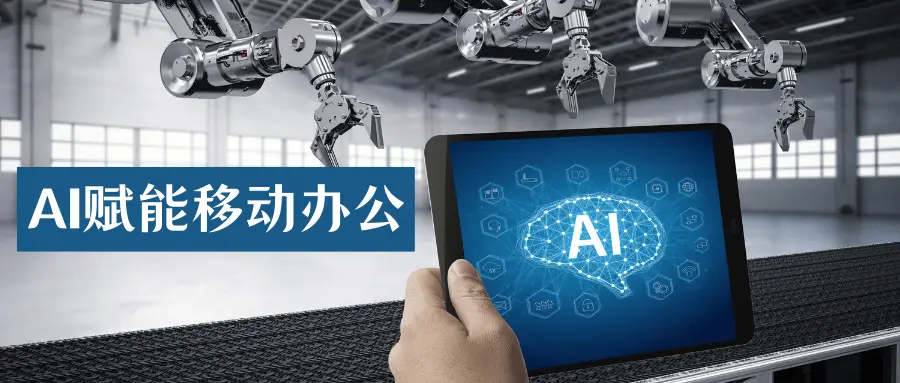Egret Cloud Spearheads AI Office Revolution: Low-Code Intelligent Platform Reshapes Enterprise Productivity
At a 50-employee manufacturing firm, Operations Director Wang (also acting as IT head) once lost sleep over digitalization challenges: procurement backlogs, fragmented production data, delayed inventory reports... Yet after adopting Egret Cloud, the company deployed the system and migrated all data in just three days. Without professional IT support, warehouse management, order tracking, and meeting scheduling were fully automated through drag-and-drop configuration and voice commands. "We used to be dragged along by systems," Wang remarked. "Now AI acts as our ‘digital employee.’"
This epitomizes today’s corporate intelligent transformation. As AI and low-code technologies converge, a "citizen development revolution" is sweeping workplaces—enabling non-technical staff to build sophisticated systems.
I. Low-Code + AI: From "Compromise" to "Competitive Edge"
Low-code platforms once faced skepticism: developers dismissed them as limited, while business users found logic-building daunting. The AI boom has transformed this landscape:
Natural Language Programming Emerges as New Paradigm
- In a demo by Tritium Cloud (under OZNER), users created a complete "customer complaint form with auto-assignment to regional managers" via conversational commands in 30 seconds. AI dynamically generated fields and workflows—a feat unattainable with traditional software.
Exponential Efficiency Gains
- Microsoft Power Platform slashed workflow build time by 50% post-AI integration. DingTalk Yida retrofitted 100,000+ low-code apps with AI in three months, enabling out-of-the-box features like smart approvals and data analysis.
Collapsing Technical Barriers
- NetEase Shufan’s "Low-Code Coach" program trains non-technical staff (e.g., accountants, journalists) to develop apps within two weeks. Egret Cloud users report: "The system handles routine tasks like a personal assistant—I focus solely on core decisions."
- Gartner predicts: "AI will shatter low-code adoption barriers, with 80% of users coming from non-IT departments by 2026."
II. Egret Cloud’s Breakthrough: "Zero IT Configuration" for AI-Office Integration
Among AI-low-code platforms, Egret Cloud stands out for its closed-loop scenarios and extreme ease of use, empowering SMEs:
1. Intelligent Hub: AI-Redesigned Workflows
- Voice-Driven Control: Smart broadcasting boosted factory notification response rates from 60% to 95%. Voice commands create tasks/schedule meetings hands-free—even in noisy environments.
- Automated Data Decisions: The "Warehouse Connect" module auto-processes text/image data. Managers access real-time inventory/customer analytics and generate reports on demand.
- Eliminating hardware limitations through unified multi-device workflows: Supports integrated PC, mobile app, and tablet access to provide secure, high-efficiency cloud office solutions, enabling enterprise-grade anywhere operations via a single platform.

2. Zero-Code Agile Deployment
- Instant Cloud Activation: Lightweight apps eliminate server deployment.
- Industry Templates: Manufacturing (supply chain) and retail (CRM) templates enable full-process automation in three days.
- Cross-System Integration: Seamless data flow with ERP/OA systems breaks down information silos.
3. Meeting-Office Closed Loop
- AI converts meeting decisions → tasks → real-time progress dashboards → automated follow-ups. A concrete manufacturer boosted efficiency by 40% by integrating production, procurement, and sales.
III. Ecosystem Race: AI-Low-Code Reshapes Industry Dynamics
Egret Cloud’s rise is just the tip of the iceberg. 2024’s low-code market reveals three trends:
- Deeper Tech Fusion: NetEase CodeWave auto-converts design sketches into functional code. DingTalk Yida’s "Super Ticket Assistant" generates service tickets from screenshots.
- Vertical Specialization: DingTalk launched 12 industry solutions (healthcare, renewables, education). Creative Information’s EAP delivered a government AI assistant ("Pu Xiaozheng") in three days—saving 70% labor vs. traditional development.
- Market Explosion: China’s low-code sector grows at 44.1% CAGR, projected to hit ¥11.8B by 2025. Policy drivers like the "Data Elements x Three-Year Plan" accelerate AI adoption. IDC ranks DingTalk Yida as China’s top low-code platform due to AI integration, heralding an "AI-or-bust" development era.

IV. Future Battle: From "Functionality" to "Intelligent Evolution"
As technical barriers fade, competition ascends to new dimensions:
- Industry Know-How Embedding: NetEase encodes manufacturing scheduling/retail promotion expertise into AI-ready business models.
- Self-Optimizing Systems: Egret Cloud plans ML-driven UI/process optimization based on user behavior.
- Ecosystem Scalability: Huawei expands partner networks; OZNER enables 5M users to co-create scenario libraries—making ecosystem synergy the ultimate differentiator.
The Democratizing Leap of AI
When a worker yells "Check A3 warehouse stock" into a speaker, the voice assistant instantly replies: "32 tons left—replenish tomorrow." Behind this scene, not a single line of traditional code was written.
By condensing AI-low-code power into lightweight mobile apps, Egret Cloud hands SMEs a digital weapon to rival industry giants.
As Academician Ni Guangnan states: "Low-code and software robots are turning development from a cost center into a profit center." Amid this wave of technological democratization, resource-constrained SMEs now stand at the optimal starting line for intelligent transformation.



